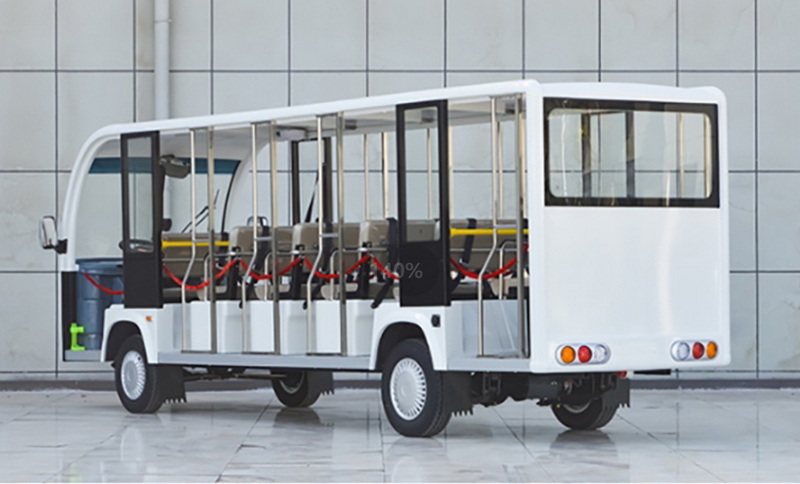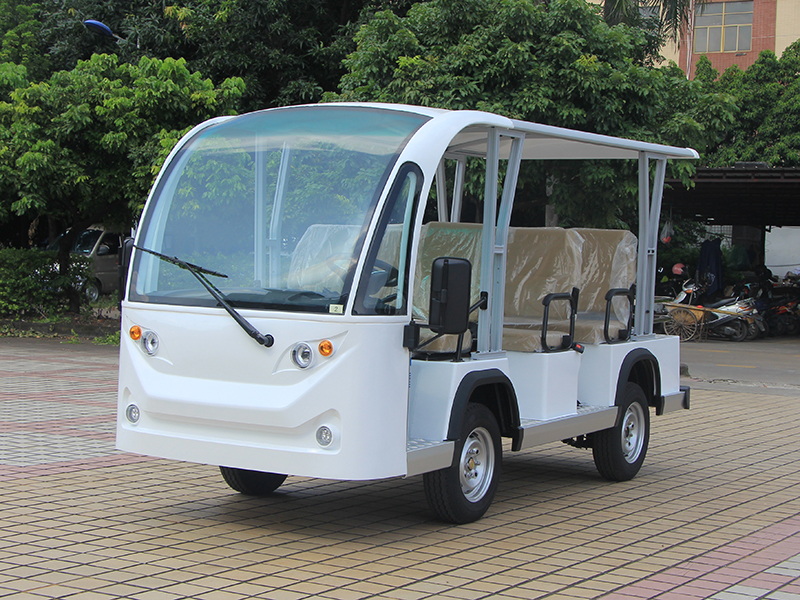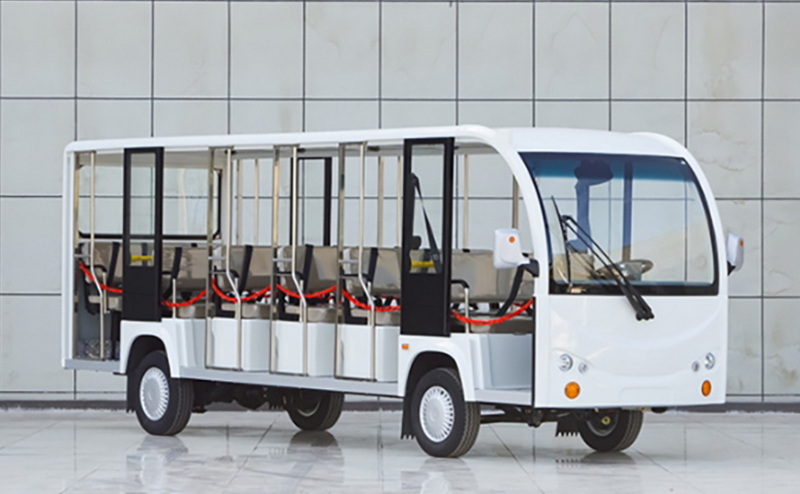Content Menu
● Leading Electric Sightseeing Bus Supplier: LangQing EV
● Introduction to Electric Sightseeing Buses
● Benefits of Electric Sightseeing Buses
>> Environmental Sustainability
>> Enhanced Tourist Experience
>> Operational and Economic Advantages
>> Positive Brand Image and Market Appeal
● Challenges and Considerations
>> Initial Investment and Infrastructure
>> Range and Charging Time
>> Vehicle Design and Customization
● Leading Electric Sightseeing Bus Builders
● Future Trends in Electric Sightseeing Buses
● Conclusion
● Frequently Asked Questions (FAQ)
>> 1. What are the main environmental benefits of electric sightseeing buses?
>> 2. How do electric sightseeing buses improve the tourist experience?
>> 3. Are electric sightseeing buses more expensive to operate than diesel buses?
>> 4. Which companies are leading builders of electric sightseeing buses?
>> 5. What challenges do tour operators face when switching to electric sightseeing buses?
City tours have long been a popular way for tourists to explore urban landmarks, culture, and history. Recently, electric sightseeing buses have emerged as a sustainable and innovative alternative to traditional diesel-powered tour buses. This article delves into the value proposition of electric sightseeing buses, examining their benefits, challenges, and impact on the tourism industry. We also highlight key players in the market, including prominent electric sightseeing bus builders and suppliers such as LangQing EV, a leading manufacturer offering a wide range of electric vehicles tailored for sightseeing and other specialized uses.

Leading Electric Sightseeing Bus Supplier: LangQing EV
Before exploring the broader market and benefits of electric sightseeing buses, it is important to highlight LangQing EV, a top-tier electric vehicle manufacturer based in Guangzhou, China, with over 24 years of experience in electric vehicle production. LangQing specializes in a variety of electric vehicles, including:
- Electric Sightseeing Carts and Buses: Designed specifically for city tours, resorts, parks, and campuses, LangQing's electric sightseeing buses offer open-top and closed configurations with customizable seating arrangements.
- Electric Golf Carts: Available in multiple seat configurations from 2 to 8 seats, ideal for golf courses, hotels, resorts, and community transport.
- Electric Ambulance Carts: Customized for emergency medical transport in confined areas.
- Electric Mini Trucks: Compact and versatile for logistics and maintenance in urban and industrial settings.
- Electric Patrol Carts: Used by security and law enforcement for efficient patrolling.
- Electric Towing Tractors: Designed for towing and transport tasks in airports, factories, and warehouses.
- Customized Vehicles: Tailored electric vehicles built to customer specifications, including branding, body design, and functionality.
LangQing EV operates an ISO-certified factory with a patented chassis design and a professional R&D team, providing OEM and ODM services to develop customized electric vehicles. Their products are widely used in over 50 countries, serving major international events and diverse industries. Their commitment to quality, service, and innovation makes them a key player among electric sightseeing bus builders globally.
Introduction to Electric Sightseeing Buses
Electric sightseeing buses are specially designed vehicles powered by electric batteries rather than fossil fuels. They typically feature open-top or double-decker designs to maximize sightseeing opportunities. These buses offer a quieter and cleaner alternative to diesel buses, aligning with growing environmental awareness and regulations in cities worldwide.
The concept of electric sightseeing buses is part of a broader shift toward electrification in public transportation, driven by the urgent need to reduce greenhouse gas emissions and improve urban air quality. Cities across the globe are setting ambitious targets to phase out diesel vehicles, making electric sightseeing buses not just an environmentally responsible choice but a strategic one for future-proofing their fleets.
Benefits of Electric Sightseeing Buses
Environmental Sustainability
One of the most compelling reasons to invest in electric sightseeing buses is their positive environmental impact. Unlike diesel buses, electric buses produce zero tailpipe emissions, significantly reducing air pollution in urban areas. This is crucial for preserving air quality, especially in historic city centers and tourist hotspots where pollution can damage cultural heritage and natural ecosystems.
- Electric buses eliminate harmful exhaust gases such as nitrogen oxides (NOx) and particulate matter, improving health outcomes for residents and visitors alike.
- Cities like Glasgow have committed to fully electric fleets to support climate goals and reduce the carbon footprint of tourism.
- The use of renewable energy sources to charge electric buses further enhances their environmental benefits, potentially making the entire sightseeing operation carbon neutral.
Enhanced Tourist Experience
Electric sightseeing buses offer a smoother and quieter ride compared to combustion engine buses. This quiet operation allows tourists to better appreciate the ambient sounds of the city and enhances the overall sensory experience of the tour.
- The absence of engine noise creates a more peaceful atmosphere, especially important for tours in natural or noise-sensitive areas.
- Advanced onboard technology, including multilingual audio guides, interactive displays, and Wi-Fi connectivity, can be integrated seamlessly due to the stable electric platform.
- The smooth acceleration and braking of electric motors provide a more comfortable ride, reducing motion discomfort for passengers.
Operational and Economic Advantages
Electric buses have fewer moving parts than traditional diesel buses, which translates to lower maintenance costs and higher reliability.
- Reduced maintenance needs include fewer oil changes, no exhaust system repairs, and less frequent engine overhauls.
- Electricity costs are generally lower than diesel fuel, resulting in significant savings over the bus lifecycle.
- Battery management systems and fleet management software optimize routes and maintenance schedules, minimizing downtime and maximizing operational efficiency.
- Electric buses often qualify for government incentives, grants, and subsidies, which can offset the initial investment and reduce total cost of ownership.
- The quieter operation also means electric sightseeing buses can operate in noise-restricted zones or during early morning and late evening hours, expanding tour possibilities.
Positive Brand Image and Market Appeal
Tour operators investing in electric sightseeing buses position themselves as leaders in sustainable tourism, attracting environmentally conscious travelers.
- This green branding appeals to a growing segment of tourists who prioritize eco-friendly travel options.
- Cities with electric sightseeing buses enhance their reputation as responsible and forward-thinking destinations.
- Marketing campaigns highlighting the use of electric sightseeing buses can differentiate tour operators in a competitive market.
- Partnerships with electric sightseeing bus builders often include co-branding opportunities and access to the latest technology and innovations.

Challenges and Considerations
Initial Investment and Infrastructure
Electric sightseeing buses require a substantial upfront investment. For example, City Sightseeing Glasgow invested £4.5 million to introduce a full electric fleet of 10 buses, supported by government funding.
- Charging infrastructure must be installed and maintained, including fast chargers for quick turnaround times and overnight chargers for fleet readiness.
- Retrofitting existing diesel buses to electric powertrains is an option but involves technical complexity and cost, as demonstrated by Big Bus Tours' conversion projects in London.
- Planning for charging infrastructure requires coordination with city authorities and utility providers to ensure sufficient power supply and grid stability.
- Space constraints in urban depots may require creative solutions for charger placement and bus storage.
Range and Charging Time
Electric buses have limited range compared to diesel buses, which may affect route planning and scheduling.
- Fast charging capabilities mitigate downtime but require compatible infrastructure.
- Daytime operation with overnight charging is a common strategy to ensure buses remain operational throughout the day.
- Advances in battery technology are steadily increasing range and reducing charging times, with some models now capable of 250+ kilometers on a single charge.
- Operators must consider route length, passenger load, and climate conditions, as these factors influence battery performance and range.
Vehicle Design and Customization
Electric sightseeing buses must be designed to meet specific tour needs, including passenger capacity, accessibility, and comfort.
- Open-top and double-decker configurations are popular for city tours, offering unobstructed views and larger capacity.
- Custom electric sightseeing buses can be tailored with luxury interiors, advanced safety features, and accessibility accommodations.
- Weight distribution and battery placement are critical design considerations to maintain vehicle stability and passenger comfort.
- Some electric sightseeing bus builders offer modular designs that allow operators to customize seating layouts, onboard entertainment systems, and branding elements.
Leading Electric Sightseeing Bus Builders
Several manufacturers specialize in producing electric sightseeing buses tailored for city tours. These electric sightseeing bus builders combine expertise in electric vehicle technology with an understanding of tourism industry needs.
| Builder | Notable Features | Example Projects |
| LangQing EV | Wide range of electric sightseeing carts and buses, OEM/ODM services, patented chassis design | Used globally in resorts, parks, and city tours |
| Ankai | Purpose-built electric buses with fast charging | Big Bus Tours' fleet in Paris and Vienna |
| Equipmake | Conversion of diesel buses to electric drive | London retrofits for Big Bus Tours |
| VEV | Electric fleet specialist partnering with Tootbus | European sightseeing tours adopting BEV and solar power |
| Various Chinese OEMs | Customized electric sightseeing buses with open-top and double-decker options | Alibaba listings with 27,000+ products |
These builders focus on integrating advanced battery technology, efficient electric motors, and passenger comfort features to enhance the sightseeing experience. Their innovations include regenerative braking systems, lightweight materials, and smart fleet management solutions that optimize energy use and operational efficiency.
Future Trends in Electric Sightseeing Buses
The market for electric sightseeing buses is evolving rapidly, influenced by technological advances and shifting consumer preferences.
- Battery Technology Improvements: Solid-state batteries and other next-generation energy storage solutions promise longer range, faster charging, and improved safety.
- Integration with Smart City Initiatives: Electric sightseeing buses can be integrated into broader urban mobility ecosystems, using real-time data to optimize routes and reduce congestion.
- Renewable Energy Integration: Some operators are pairing electric buses with solar-powered charging stations, further reducing the carbon footprint of tours.
- Autonomous Driving Features: While still in early stages, autonomous driving technology could eventually be incorporated into sightseeing buses, enhancing safety and operational efficiency.
- Enhanced Passenger Experience: Augmented reality (AR) and virtual reality (VR) technologies may be used to enrich tours, providing immersive historical and cultural narratives synchronized with the bus route.
Conclusion
Electric sightseeing buses represent a worthwhile investment for city tour operators aiming to reduce environmental impact, enhance the tourist experience, and improve operational efficiency. Despite higher initial costs and infrastructure requirements, the long-term benefits in sustainability, cost savings, and brand positioning are significant. As more cities and operators adopt electric fleets, supported by innovative electric sightseeing bus builders like LangQing EV, Ankai, Equipmake, and VEV, the future of urban tourism looks greener and more enjoyable for all. The transition to electric sightseeing buses is not only an environmental imperative but also a strategic business decision that aligns with evolving market demands and regulatory landscapes.

Frequently Asked Questions (FAQ)
1. What are the main environmental benefits of electric sightseeing buses?
Electric sightseeing buses produce zero tailpipe emissions, reducing air pollution and protecting urban air quality, which benefits residents, tourists, and historic sites.
2. How do electric sightseeing buses improve the tourist experience?
They offer a quieter, smoother ride that allows passengers to better enjoy city sounds and sights, and they can be equipped with advanced audio guides and comfort features.
3. Are electric sightseeing buses more expensive to operate than diesel buses?
No, they typically have lower operating costs due to cheaper electricity, fewer maintenance needs, and higher reliability, despite higher upfront investment.
4. Which companies are leading builders of electric sightseeing buses?
Leading builders include LangQing EV, Ankai, Equipmake, and VEV, with many customized options available from Chinese OEMs and other manufacturers.
5. What challenges do tour operators face when switching to electric sightseeing buses?
Challenges include the high initial investment, need for charging infrastructure, limited range, and ensuring vehicle designs meet tour requirements.










































